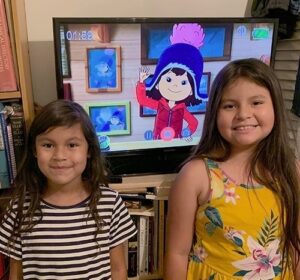By Gracelynn Growingthunder, aged 9
Nakoda, Kiowa, Oklahoma City
MonksAboutArt

Molly of Denali is art. It is a simple and colorful animated series that presents the natural beauty of Alaska. The language of the region is pronounced to respect time and space, as taught orally. We can learn from the show characters, who are Alaska Natives and use skills like geography, mapmaking, history, and lifeways in places where people live. Their relationships allow respectful learning from grandparents, parents, relatives, and friends. In Molly of Denali, animals are important to the people of Denali for companionship, food, clothing, and in living close in the balance of nature. In the adventures of Molly Mabray children can see the effects of climate change for Alaska to learn why they should help. I feel I can learn more by watching the episodes of Molly Of Denali that make me feel comfortable because I am learning about the earth, science, and culture of others.

What I notice is that people wear clothing of their tribe, as well as the trendy things of today. I like that Molly and I have a similar look. She and I have eyes, face shape, hair and skin color alike. There are others in the show that are similar but yet different. I like that because I can see myself in the cartoon that makes me proud. For me, it is important that other kids can see us Indian kids as the same with cell phones, video conferencing our parents, and sharing how we grow up with to take care of our grandparents because we are all equal. What I like most is Molly’s family use ulus and wooden tools like my family does, and their homes look like our homes the way they decorate.
You can see Molly of Denali on PBS, on PBS kids at 6:30 pm, or on the PBS Kids app.
Molly of Denali official website with videos, games, and more!
